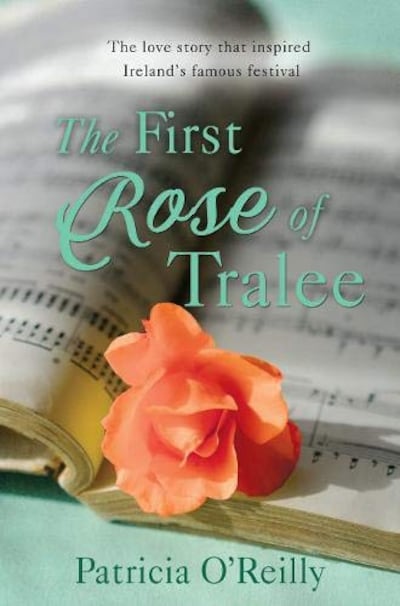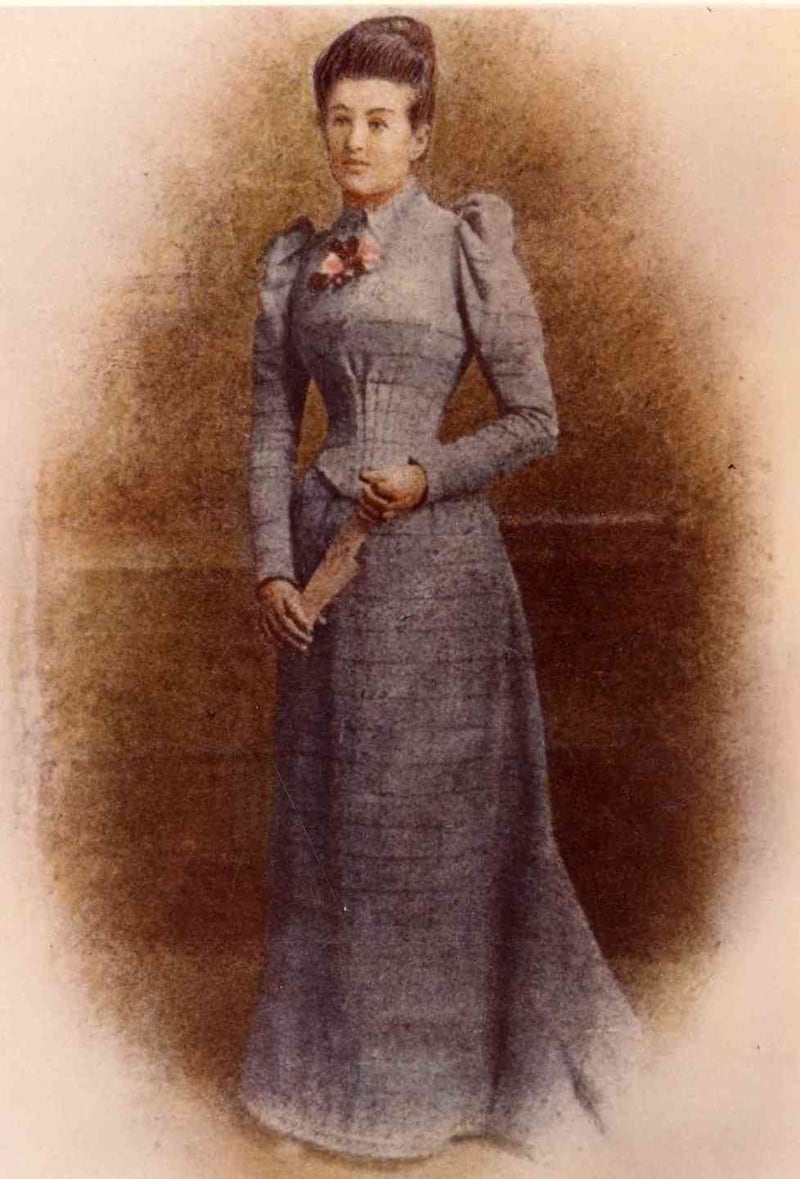It was while sitting in my aunt’s kitchen during the school holidays that I first heard of Mary O’Connor, the young girl who inspires the annual Rose of Tralee International Festival.
Each morning after 10 o’clock Mass, auntie and her relatives had tea and biscuits sitting around the oil-clothed table. The chat was mighty. They talked about Daniel O’Connell, Repeal of the Union, the Whiteboys and the Great Famine, as though the people were living and the events happening.
When the name Mary O’Connor was mentioned, I perked up. One of my cousins was called Mary O’Connor. The women laughed. And told me about the other Mary O’Connor, known as the Rose of Tralee who had lived more than 100 years ago. She was a shoemaker’s daughter from Brogue Lane, so beautiful, they said, that William Mulchinock, the young master from the big house, fell in love with her.

The Rose of Tralee Festival was in its infancy then, but already it was bringing a new vibrancy to the town – music and bunting strung along the streets. Not that my cousins and I got to celebrate. We were banished “out of harm’s way” to the seaside village of Fenit. As the years passed the festival grew to become the international success of today, with The Rose of Tralee ballad that William wrote for Mary becoming its signature tune.
The little I learned about Mary O’Connor that summer stayed with me, lurking at the back of my mind until about four years ago when I checked out if her story had been written in novel form. When I discovered that no such novel existed I began researching and writing the story that has become the book titled The First Rose of Tralee’.
Researching was a minefield of differing bits of evidence. But because I was writing historical fiction I settled on some facts, embellished others and added characters and intrigue, taking creative liberties with set pieces, imagining places, occurrences and dialogue. As I wrote fact blurred into fiction and vice versa.
And names. There were several Williams or derivatives, a few Johns and many Marys and Margarets, and others whose primary names I couldn’t source. In the interest of the reader’s ease, I changed some names and enjoyed the re-naming process.
The story is set in the 1840s during the time of Daniel O’Connell’s monster rallies for Repeal of the Irish Union of 1801. The parts of his speeches that I quoted are taken from Richard Aldous’s Great Irish Speeches.
I visited Tralee and met archivist Mike Lynch, a purist with regard to getting details right and a mine of helpful information, maps, drawings and even a portrait of William’s Uncle John. I stayed in Benners Hotel, a Bianconi coach stop in the mid-19th century, and imagined William leaving and returning to Tralee by coach.
How did I manage without Google? On-line I got information on the shoemaking industry of the mid-nineteenth century; the running of big houses - kitchen to upper floors; the lives of the peasants; education of the time; consumption or the white plague as TB was known.
When writing about a particular era I like to read works of fiction by other authors. Compared to what’s been written about Ireland during and after the Famines I didn’t come across much pre-famine, but I re-read Beatrice Coogan’s The Big Wind. Despite it being a contemporary novel, I familiarised myself with sensory India with Gregory David Roberts’s wonderful Shantaram.

The Way We Wore Exhibition in the Collins Barracks Museum provided an insight into the clothing of the time. The National Famine Museum in Co Roscommon and Kerry County Museum proved useful information about kitchen utensils and items of furniture.
I began writing fairly early on, knowing I’d likely scrap those pages during revisions. How right I was. I scrapped most of the book on several occasions. It would not write.
As writers we know that the opening paragraphs or point of entry, as it’s called in publishing circles, of a book is most important. The opening I finally settled on has Mary’s father threatening her with marriage and her flouncing out to the potato market before wandering along to Denny Street that was “black with people” as one of Daniel O’Connell’s rallies was in progress.
Great. I had a rally, Mary O’Connor and Daniel O’Connell. I added falling snow. Why not include William Mulchinock, the hero of the story?
Margaret Mulchinock, William’s mother, an important character, was introduced in the second scene. On the death of her husband in the early 1830s she took over the running of the family businesses – and so I learned about the Buinín cattle of Kerry.
William managed the drapery store on the Mall – known as the Munster Warehouse in the 1960s where the fashion-conscious of Tralee shopped. I had him source jewel-coloured silks and taffetas from the Far East – I saw such examples in London’s Victoria & Albert Museum.
Mary worked in the big house, West Villa or Westville, depending on source. I settled for West Villa. She started as a kitchen skivvy, progressed to the upstairs and finally was promoted to the position of nursery maid where William first met and fell in love with her.
And so the research went. I wrote the first draft. It was a mess. I did further research and the second daft was a little better. I spent what at the time I considered to be inefficient days soaking up atmosphere and getting a bit of information here and another bit there. Those “inefficient” days proved invaluable as I ended up with a notebook full of all sorts of scrawled information – such as the way dresses were hung in the wardrobes of the time; the use of tea to restore mahogany furniture; the healing properties of goose fat for chapped hands and the favoured foods for a formal dinner – when trifle was known as an Empire dessert.
Gradually, re-write after re-write – in between illness visited on our family – the book came together. And now it is due for publication by Poolbeg Press and will be launched at Writers Week in Listowel on Friday, May 31st.
The First Rose of Tralee by Patricia O’Reilly is published by Poolbeg Press












